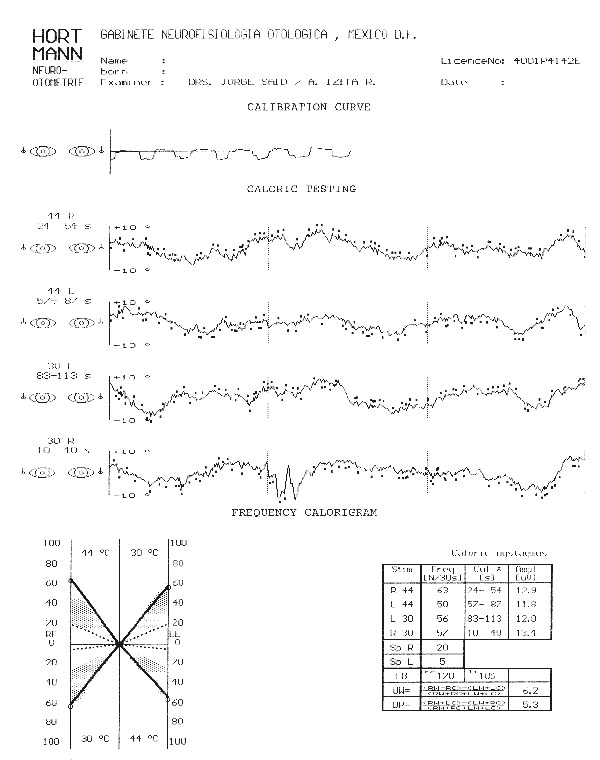 Vestibular Tests for Vertigo. All Specialties to Recover Your Hearing and Balance Health!
Vestibular Tests for Vertigo. All Specialties to Recover Your Hearing and Balance Health!
Caloric Vestibular Tests
It is the longest and most difficult procedure of the vestibular study, but also the one that provides more information regarding the location of the lesion. Its objective is to stimulate the semicircular canals on each side at different temperatures generating a nystagmic response in opposite directions that allow us to determine the reflex activity from each ear and its integration into the CNS.
The caloric test is performed by placing the patient on a stretcher with the head at a 45 ° angle, injecting hot and cold water; In our case we use air with a standardized temperature of 24 ° and 48 ° C in each external auditory canal, with a Hortmann-branded air caloric irrigator. We used the Claussen butterfly charts as a diagram to determine the peripheral or central alteration of the vestibular system. Proceeding to the specific treatment of vertigo.
Vestibular tests of vertigo and dizziness. Caloric stimulation uses different temperatures to diagnose some damage to the nerve of the ear as a cause of dizziness or vertigo. The damage of the vestibular portion of the nerve of the inner ear (acoustic nerve) is a common cause of vertigo.
To perform the test, each ear is evaluated separately using a computerized caloric stimulation machine. Nystagmus (rapid movement of the two eyes in response to certain stimuli, which is necessary for normal vision and balance) is measured by placing electrodes around the eye and the information obtained is recorded on the computer (ENG) to analyze the velocity Of the slow and rapid phase of nystagmus, as well as its culmination time, amplitude and coordination; Through these variables determines the place of origin of the central vertigo, its location and therefore, the correct treatment of the same.
Concert Your Appointment! We Are Ready To Meet You! Do It Now
Vestibular Tests, Vertigo and dizziness


